Emissions Markets for Fuel Suppliers
The EU’s ETS2 scheme, effective from 2027, extends carbon pricing obligations to fuel suppliers serving building, road transport, and other sectors across Europe and the UK. Grey Epoch supports fuel suppliers in managing these new responsibilities with expert guidance and market access.
Trade Allowances
Competitve Pricing
Expert Advice
Fuel suppliers include wholesalers, importers, refiners, and distributors. Under the EU ETS 2, these companies may be responsible for emissions compliance, even if they don't burn the fuel themselves. The system captures emissions at the point of supply, making suppliers accountable if the fuel they sell leads to CO₂ emissions from particular industries.
Requirements
ETS2
As part of the 2023 revisions of the ETS Directive, a new emissions trading system named ETS2 was created, separate from the existing EU ETS. This new system will include fuel suppliers that deliver fuels for consumption by certain industries.
Our Services
To help fuel suppliers efficiently, Grey Epoch Europe offers clear advice about the regulatory landscape, access to procurement, and hedging solutions while providing comprehensive support in navigating the emissions landscape.
Manage Price Volatility
With the price fixed, you’re not exposed to market fluctuations.
Fix Now, Pay Later
With a forward transaction, you pay the bulk of the fixed price up to 3 years later.
Budget Certainty
Lock in your profits by fixing the price.
Most popular
Forward Purchase
Forward buying in the ETS 2 involves purchasing EU Allowances (EUAs) in advance to lock in prices for future compliance without a large upfront payment.
Price Cap
A price cap will provide you with some level of price certainty, while still being exposed to price swings up to the value of the cap. This solution allows you to set the maximum price you will pay for allowances, fixing your maximum exposure.
There is no minimum price.
Direct Procurement
Direct procurement is the simplest solution. You buy Allowances for payment and delivery within 5 business days.
Direct procurement can be done throughout the year. Buying early, ahead of emitting activities provides price certainty.
Cash-Flow Optimisation
With our deferred payment solutions, you can lock in carbon allowance prices today and schedule delivery and payment at a later date.
This gives you the flexibility to meet compliance needs without tying up all capital upfront.
TAKE THE NEXT STEP
Prepare your business for ETS 2, with expert guidance to ensure compliance deadlines are met with confidence.
Contact Grey Epoch today to learn more about our services and how we can help you navigate the regulatory landscape.
40%
typical savings in trading fees
1bn
carbon products traded annually
2nd
largest ETS trader globally
18yrs
active in carbon markets
FAQs
-
A separate ETS starting in 2027 for fuels used in road transport, buildings, and smaller industries.
-
They cover different sectors, use separate allowances, with different supply and demand mechanics. Although also a cap-and-trade system, it works Fastly different from the original ETS.
-
The following fuel suppliers are regulated under the EU ETS 2:
Authorised keepers of tax warehouses liable for excise duty, mainly covering liquid transport fuels.
If this does not apply, any person liable for excise duty on natural gas or solid fuels — including those exempt from paying (e.g. household coal suppliers) who must still register with national authorities.
If neither applies, Member States may designate another responsible party, for example where multiple persons are jointly liable for the same excise duty or where national systems require a different point of obligation
-
End consumers are in scope when fuel is released for consumption by an ETS2-regulated supplier and the activity is not already covered by ETS1. Coverage is based on Common Reporting Format (CRF) categories from the IPCC 2006 Guidelines:
Buildings – CRF 1A4a (commercial/institutional) & CRF 1A4b (residential): space/water heating, cooking, small equipment and off-road tools used in these settings.
Road transport – CRF 1A3b: cars, motorcycles, vans, lorries, buses.
Energy industries not in ETS1 – CRF 1A1: small power/heat plants, refineries/coke ovens and other combustion where the installation is outside ETS1.
Manufacturing & construction not in ETS1 – CRF 1A2: on-site combustion for heat/electricity and mobile/off-road machinery, plus head-office energy use for these firms.
Member-State opt-ins – Article 30j: any additional sectors a country adds to ETS2.
-
The ETS 2 will have a soft price cap of €45 (inflation adjusted) per tonne of CO₂. If the average allowance price exceed this level for a predefined amount of time, additional allowances can be released from the Market Stability Reserve. The mechanism will be reviewed in 2030.
-
The €45 trigger is inflation-linked at 2020 prices. When the EU ETS starts, this means the cap might already exceed €55. Further changes may be reviewed periodically by EU regulators as part of ETS 2 updates.
-
The annual compliance cycle is as follows:
Jan-Dec: Monitor emissions.
April 30th: From 2026 - submit verified annual emissions report for previous year’s emissions.
April 30th: From 2028 – report on average share of carbon costs passed on to consumers in the previous year.
May 31st: From 2028 - surrender allowances for previous year’s emissions.
July 31st: Submit possible improvements to Monitoring Plan (deadline extension to September possible).
-
Yes, certified biofuels may reduce or remove the obligation to surrender allowances.
In Scope – Biofuels, including biodiesel, fall under ETS 2 because they are supplied for use as motor or heating fuels, even though they are derived from biological sources.
Zero-Rating – When a biofuel meets the sustainability and greenhouse gas savings criteria set out in the Renewable Energy Directive (RED II), its emissions are treated as zero, meaning no allowances need to be surrendered.
Proof Required – To qualify for zero-rating, operators must provide documented evidence that the fuel complies with RED II sustainability standards.
-
The ETS 2 scheme itself starts in 2027, so primary compliance purchases aren’t yet possible. However, for those comfortable with derivatives, futures contracts are already available on exchanges, allowing early market exposure and hedging ahead of the scheme’s launch.
-
No — the two systems will have separate allowances.
Grey Epoch
Stay in the loop and sign up for the
Grey Epoch newsletter:
Enter your email
Industries
Shipping
Aviation
Industrials
Fuel Suppliers
About
Home
About
News
Carbon Markets
UK & EU ETS
ETS 2
CCAs
Voluntary Markets
GOs
Documentation
Contact
FAQs
Glossary
Privacy Policy
Socials
© Grey Epoch. All Rights Reserved 2025
Grey Epoch Europe Limited (FRN: 959638) is an appointed representative of Thornbridge Investment Management LLP (FRN: 713859) which is authorised and regulated by the Financial Conduct Authority.
Terms & Conditions




